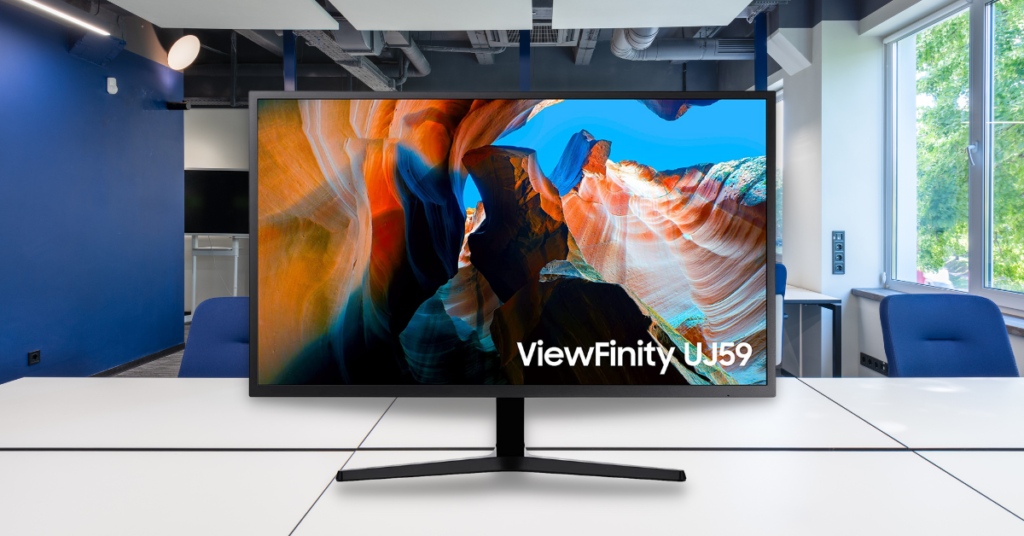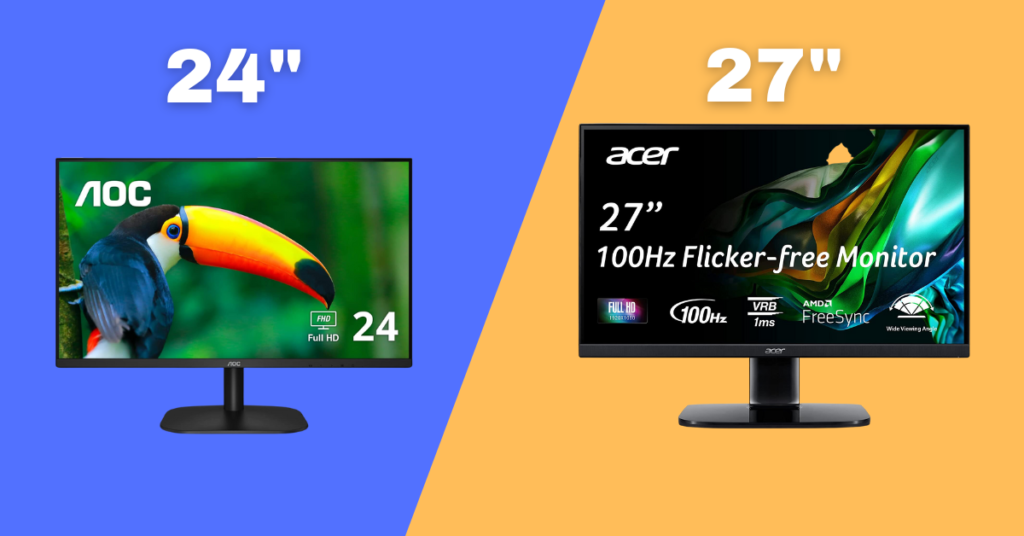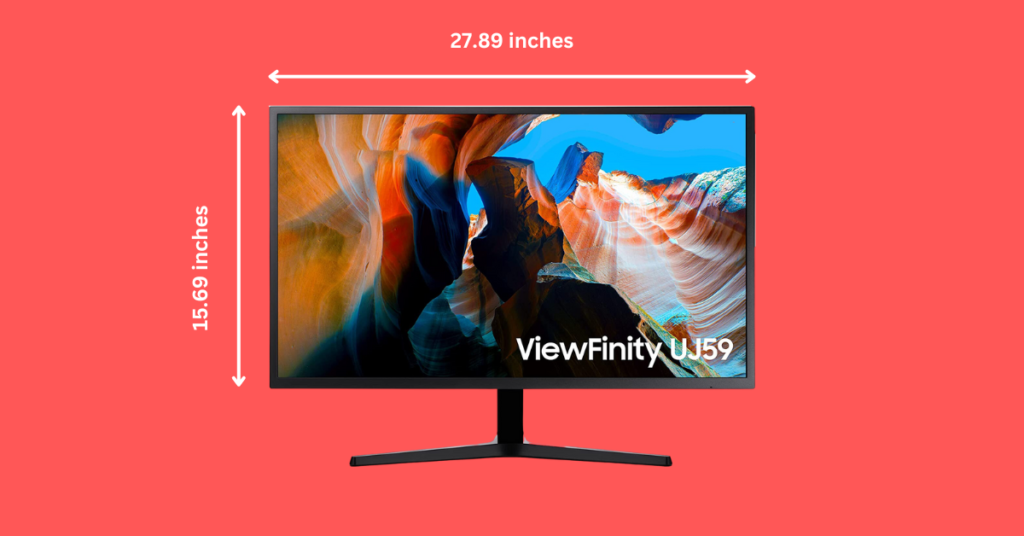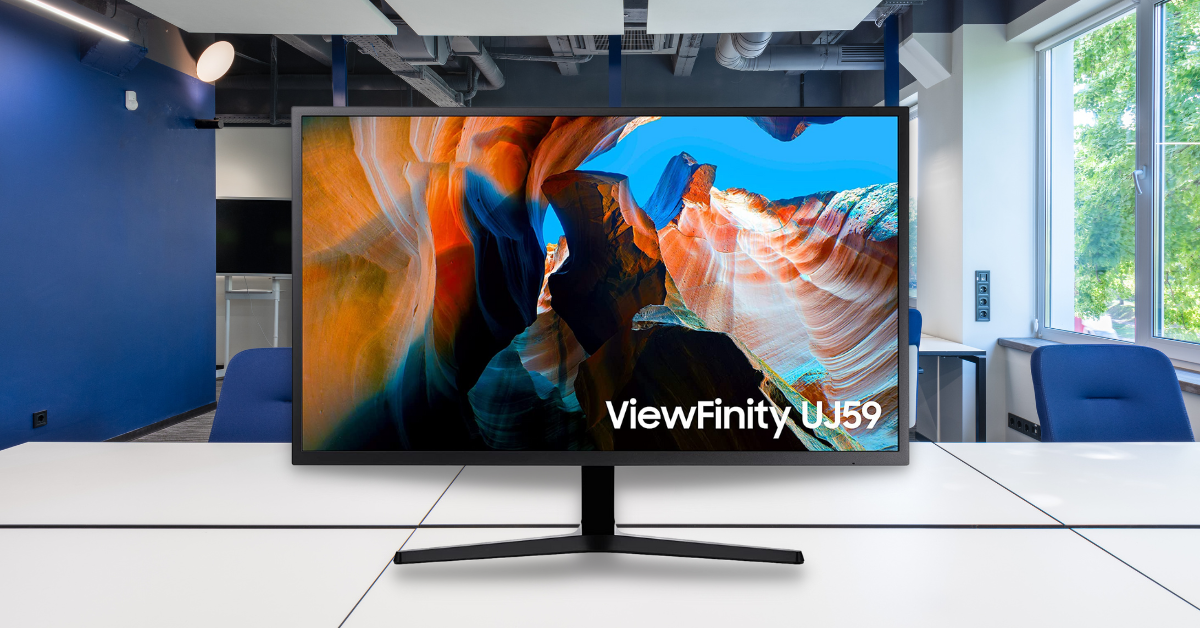A monitor is an essential component of any office. Selecting the proper monitor size is essential for your productivity and overall computer experience. Do you find choosing the ideal monitor size for your office work difficult? Do you struggle to find a monitor that will boost your productivity while also providing an enjoyable computer experience? If so, keep reading to learn how to select the perfect monitor size for your office work.

This article will help you choose the best monitor size for your office work. We’ll discuss important factors regarding monitor purchases and determine whether a bigger monitor makes you more productive. We’ll also explore the best monitor sizes for coding, writing, and editing images and videos.
Does the Size of a Computer Monitor Matter?
Computer monitors come in a variety of sizes, and many people wonder if the size of a monitor is important. The short answer is that monitor size does matter because it affects productivity and comfort.
A larger monitor generally provides more screen real estate, which is useful for multitasking and viewing multiple windows simultaneously. This is especially useful for office tasks like data analysis, programming, and writing.
On the other hand, small-sized monitors are ideal for people who need to work in multiple locations or have limited desk space. They are portable and can fit into smaller bags, making it easy to set up a workspace wherever you go.
Factors to Consider When Choosing a Monitor for Office Work
Several factors must be considered when choosing a monitor size for office work.
Screen Size

The most important factor to consider when selecting a monitor is the screen size. The size of your monitor is determined by your workspace and your specific requirements. Smaller screens are ideal for desks with limited space, whereas larger screens are ideal for multitasking and handling complex data.
Resolution

The monitor’s resolution is the number of pixels the screen can display. A higher resolution can provide more detail and clarity in images and text. A monitor with a resolution of at least 1080p is recommended for office work. If you work with high-resolution images or videos, you should consider a monitor with a higher resolution, such as 4K.
Ergonomics
For comfort during extended work sessions, the monitor’s ergonomics are important. Choose a monitor with a movable stand that can tilt, swivel, and be raised or lowered. Additionally, some monitors provide flicker-free technology or blue light filters to lessen eye fatigue.
Connectivity
Consider the monitor’s available connectivity options. Choose a monitor that has at least one DisplayPort and one or two HDMI ports. Ensure the monitor has the required ports to connect additional devices, like a laptop or a gaming console.
Budget
Finally, when selecting a monitor, take your budget into account. Higher resolution and faster refresh rate monitors tend to be more expensive. However, there are lots of reasonably priced options that still provide good functionality and features.
Recommended Monitor Sizes for Office Work

Smaller Monitors (less than 24 inches)
Small monitors are ideal for those with limited desk space or prefer a more compact workspace. They are also less expensive than larger monitors. A monitor size of 21-23 inches is recommended for those who primarily work with text-based documents and email correspondence.
Medium Monitors (24-27 inches)

Medium-sized monitors are the most commonly used for office work. They provide a good balance of screen real estate and affordability. A 24-27-inch monitor is recommended for those who work with multiple windows open or who need to view detailed spreadsheets and graphs. They’re also appropriate for graphic designers and video editors who need higher resolution and color accuracy.
Larger Monitors (greater than 27 inches)

Large monitors are ideal for people who work with complex data, graphics, and multimedia. A monitor size of 30 inches or more is recommended for those who require a high level of detail and accuracy, such as architects, engineers, and photographers. Large monitors, however, can be pricey and take up a lot of desk space.
Pros and Cons of Each Size
Consider the pros and cons of each size before making a decision.
Smaller Size
- Pros
- More affordable than larger monitors
- Suitable for limited desk space
- Easier to transport and move around
- Can be used as a secondary display for a laptop or a larger monitor
- Cons
- Limited space for multitasking
- May not offer as high resolution or color accuracy as larger monitors
Medium Size
- Pros
- Offer a balance between screen size and affordability
- Suitable for those who work with multiple windows
- Provide a comfortable viewing experience
- More affordable than larger monitors with similar features
- Cons
- May still be too small for some users
- May not provide enough screen real estate for complex tasks
Large Size
- Pros
- Offer more screen real estate for complex tasks
- Suitable for those who work with complex data, graphics, and multimedia content
- Provide high resolution and color accuracy
- Can improve productivity
- Cons
- Can be expensive
- Require a lot of desk space
- May not be suitable for those with limited budgets or desk space
Best Monitor Size for Coding or Programming

A larger monitor size is recommended for coding or programming to accommodate the multiple windows and applications that programmers typically use. The ideal monitor size for this type of work is at least 27 inches, though some people might prefer even bigger sizes, like 32 or 34 inches.
These monitors have enough space to display multiple code windows or text editors side by side. This can boost productivity by making it easier to view and edit code.
Best Monitor Size for Writing and Basic Tasks
A smaller monitor size may be sufficient for basic tasks such as web browsing, email, and word processing. A 24-inch monitor is a good choice for these tasks because it provides enough screen real estate without overwhelming your workspace. Furthermore, a smaller monitor may be less expensive and occupy less physical space on your desk.
Best Monitor Size for Image and Video Editing
A larger monitor size is recommended for image and video editing to allow for a more detailed view of the edited images or videos. The ideal monitor size for this type of work is at least 27 inches, though some professionals might prefer even bigger sizes, like 32 or 34 inches. A monitor with excellent color accuracy and resolution is also necessary for precise color grading.
FAQs
How Big Should My Monitor Be for Office Work?
Your monitor size for office work depends on the tasks you’ll be performing. A 24-inch monitor is a good choice for general office work. However, a larger monitor is recommended for more complex tasks such as coding or image and video editing.
Does a Bigger Monitor Mean More Productivity?
In general, a bigger monitor can enhance productivity by allowing you to see more content at once and making it easier to multitask. However, it’s important also to consider factors such as resolution, refresh rate, and adjustability when choosing a monitor.
Can I Use a TV as a Monitor for Office Work?
Although it is possible, but using a TV as a monitor for work is not advised. Computer monitors are made for up-close viewing, whereas TVs are made for viewing from a distance. Additionally, TVs might be unable to display images at the same resolution or refresh rate as computer monitors, which can affect your overall experience.
How Important Is Adjustability in a Monitor for Office Work?
When selecting a monitor for office use, adjustability is a key factor. You can find the most comfortable viewing position for your needs with a monitor that has height, tilt, and swivel adjustments, which can make it more comfortable to use for extended periods of time. This can reduce eye strain and discomfort, ultimately increasing productivity.
Is a Higher Contrast Ratio Better for Office Work?
A higher contrast ratio on a monitor can improve the visual quality of images and videos, but it may not be as important for general office work. A monitor with a standard contrast ratio should be adequate for most office tasks. However, a higher contrast ratio monitor may be worth considering if you are working with images or videos.
Can a Monitor with a Higher Refresh Rate Improve Productivity?
Yes, a higher refresh rate monitor can provide a smoother visual experience, which can be beneficial for certain tasks such as gaming or video editing.
Is It Worth Investing in a More Expensive Monitor for Office Work?
A more expensive monitor may have more features, such as higher resolution, faster refresh rate, or better adjustability, but it is not always necessary for general office tasks.
It’s important to consider your specific needs and budget when choosing a monitor for office work, and invest in a high-end monitor only if it offers essential features.
Key Takeaways
- Choosing the right monitor size for office work is crucial for your productivity.
- The best monitor size for office work depends on the specific tasks involved, your budget, and the available space on your desk.
- A 24-inch monitor is ideal for general office tasks like web browsing and word processing.
- A larger monitor of at least 27 inches is recommended for more complex tasks such as coding or image and video editing.
- Monitors 32 inches or larger are only useful for professionals who need extra space.
- A more expensive monitor may have more features, such as higher resolution or faster refresh rates, but it may not always be necessary for general office tasks.
- Ultimately, the best monitor size for office work depends on your needs, budget, and available physical space.

